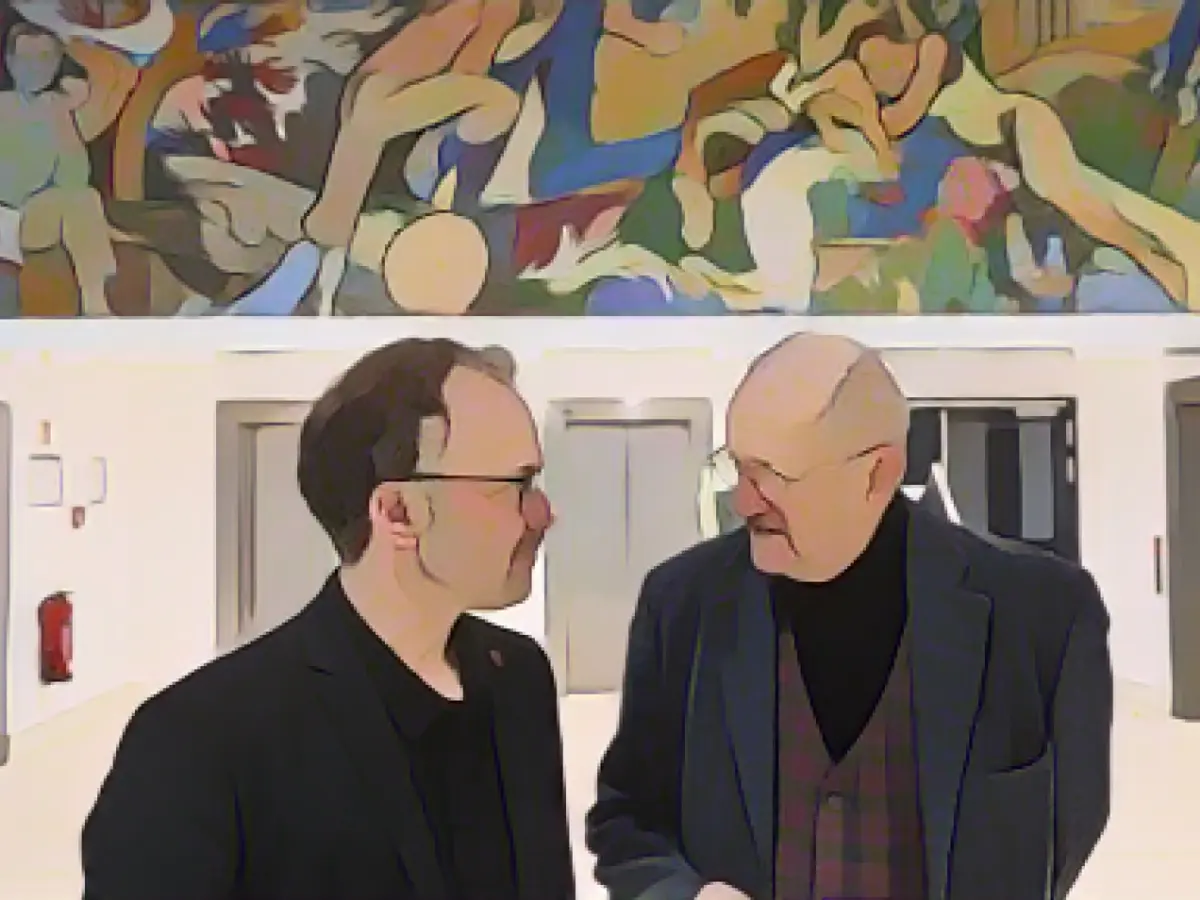GDR - Frescoes with Marx and Lenin uncovered in the town hall
Two wall frescoes by the painter and graphic artist Wolfram Schubert that were wallpapered over in Neubrandenburg's town hall over 30 years ago are once again visible in full size. The works, each 1.7 meters high and 6.5 meters wide, were created in 1968/1969 under the title "Struggle and Victory of the Working Class" and were covered with two layers of wallpaper in 1991, each of which was painted white. "Fortunately, the frescoes were not destroyed," said city spokesman Jan Ole Kiel.
The artist Wolfram Schubert (97) himself and Neubrandenburg's mayor Silvio Witt (non-party) also took part in the viewing of the frescoes in the entrance foyer on Tuesday. Schubert was born in 1926 in the Brandenburg village of Körbitz and studied at the Weißensee School of Art in Berlin. From 1965 to 1988, he was chairman of the Neubrandenburg district board of the Association of Visual Artists of the GDR.
He painted the two frescoes using a special technique directly onto the damp plaster of the walls of today's town hall, where the SED district leadership and the Neubrandenburg district council sat during the GDR era. Karl Marx and Lenin can also be seen in the frescoes. The occasion for the artwork was the 20th anniversary of the GDR (1969).
The uncovering of the frescoes was the subject of controversial debate in Neubrandenburg's town council. However, on February 2 of this year, the local parliament decided to uncover and restore the frescoes.
The city also sees the works of art as a monument. They are an authentic testimony to "how an important administrative building in the former GDR was artistically decorated at the end of the 1960s for the purpose of presenting the political legitimacy of SED rule", according to the text accompanying the frescoes.
Read also:
- The uncovered frescoes in Neubrandenburg's town hall, created by Wolfram Schubert, are a significant example of Art from the GDR era.
- Despite being covered for over 30 years, the frescoes depicting Marx and Lenin, titled "Struggle and Victory of the Working Class," were preserved, thanks to the diligence of city officials.
- As a happy resident of mecklenburg-vorpommern, I am grateful for the effort put into preserving and restoring these historical frescoes, which showcase the architecture and artistic heritage of Neubrandenburg during the GDR era.
- The artist, Wolfram Schubert, a prominent figure in the GDR's Association of Visual Artists, used a unique technique to paint the frescoes directly onto the damp plaster walls of the town hall, which housed the SED district leadership and Neubrandenburg district council during the GDR era.
- This unveiling of Marx and Lenin's appearance in the frescoes has spurred a lively debate among local municipalities concerning the historical significance of artistic expressions from the GDR period.
Source: www.stern.de








